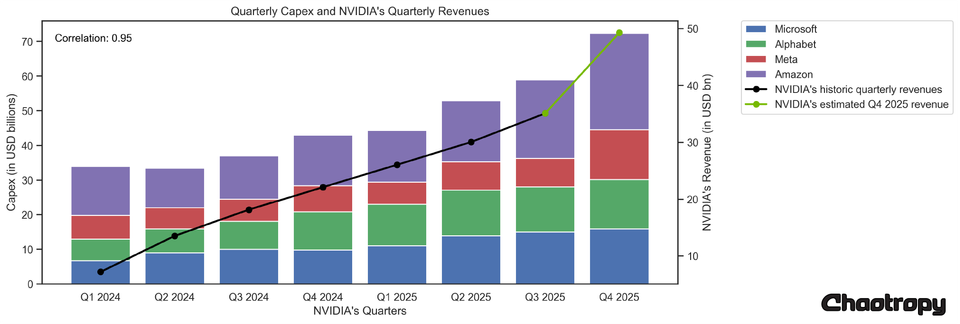NVIDIA: No Reason To Panic
The recent sell-off in NVIDIA shows one thing above all, in my opinion: many of today's investors do not understand the companies they are investing in.

This is the author’s opinion only, not financial advice, and is intended for entertainment purposes only. The author holds a beneficial long position in NVIDIA Corporation. The author receives no compensation for writing this article and has no business relationship with any of the companies mentioned.
Consider this hypothetical scenario: You go skiing for a few days in mid-January and do not look at your stock portfolio. You open your portfolio and see that NVIDIA is up 15%. You do some research and find out that a Chinese startup called DeepSeek has trained a new reasoning model on NVIDIA GPUs that uses a fraction of the hardware and is on par with the best AI models available from OpenAI. You remember Sam Altman's post on X from January 6 that OpenAI is even losing money on its $200/month pro subscriptions, and you're really excited and think to yourself: "Finally, the problem of cash-draining AI applications has been solved, finally AI can really be monetized." This hypothetical scenario doesn't sound that far off, and it shows me how flexible the narrative is often about why a stock moves up or down.
insane thing: we are currently losing money on openai pro subscriptions!
— Sam Altman (@sama) January 6, 2025
people use it much more than we expected.
Sam Altman's post on X from January 6, 2025
Yet we all know that did not happen. We all know that Wall Street currently believes that the revolutionary low hardware hunger of DeepSeek-R1 questions NVIDIA's expected future sales growth and margins. But is that reasonable? I doubt it, but let me explain.
The first industry to benefit substantially from the efficiency gains of AI was the software industry. It's not for nothing that one software company after another is laying off its programmers. It's not for nothing that Meta plans to let AI do the work of "mid-level engineers". And why? Because AI can code. Anyone who uses AI for programming every day, as I do, knows the strengths and weaknesses of our loyal in silico servants. Using DeepSeek-R1's resource efficiency as an argument against NVIDIA somehow implies that generative AI is now a mature technology that can suddenly achieve the same mature performance with much less hardware.
But that's simply not true. Today's generative AI is far from being a mature technology. Try using OpenAI's o1 pro mode to write a more complex program, even a simple Flask app. AI will quickly reach its limits and literally lose track of the code it has generated. DeepSeek-R1 does not fundamentally change this, but the efficiency with which it leverages the available hardware gives a hint of what AI running on NVIDIA's upcoming Blackwell generation might be capable of.
DeepSeek-R1 is a breakthrough that reinforces every bullish argument. Efficient open source models will enable hundreds of applications of AI, such as AI at the edge, so that small and power-efficient GPUs like NVIDIA's Jetson will be used in a new generation of devices, some of which have not been invented yet. In my last article, I argued that according to Jevons' Paradox, the demand for a resource grows, not shrinks, when it can be used more efficiently. DeepSeek-R1 is not the peak of the AI revolution; this revolution is just taking off.
Panic reactions like the NVIDIA sell-off on Monday, January 27, 2025, are evidence to me that today's excessive trading hours are hurting market efficiency. Four hours of trading per business day would be perfectly sufficient, and investors could spend the rest of the day understanding the companies they are invested in instead of staring at charts.
Follow me on X for frequent updates (@chaotropy).




